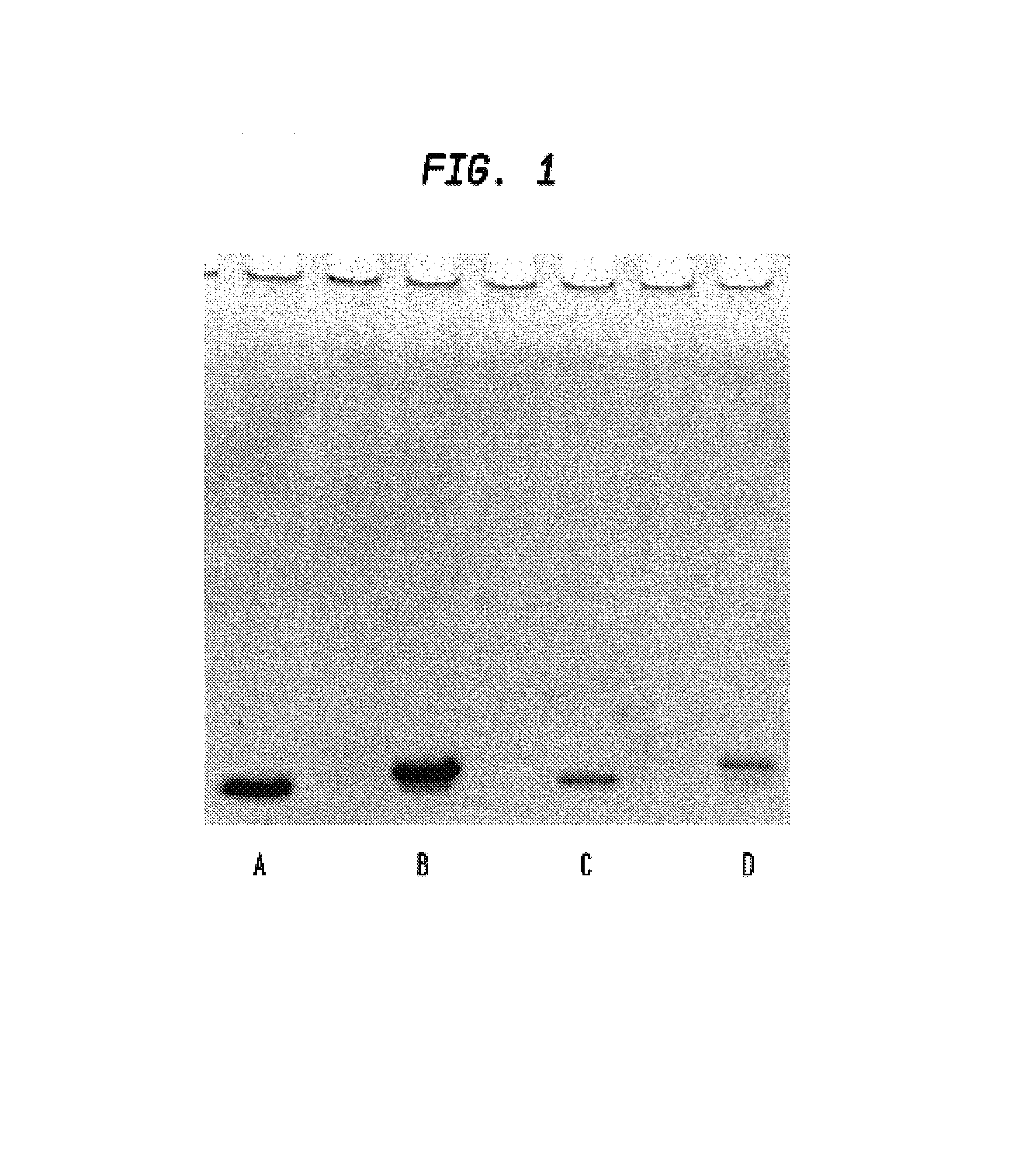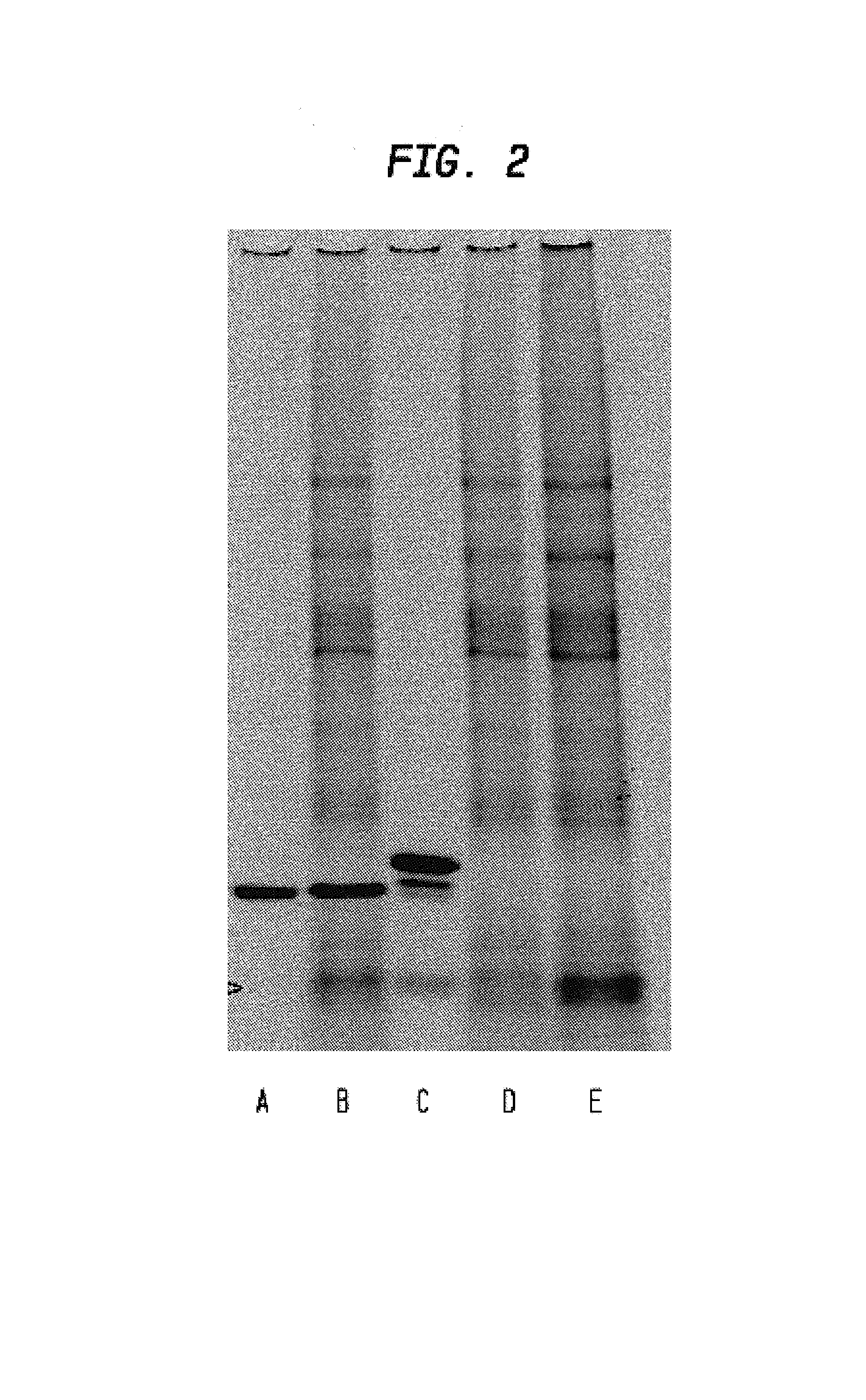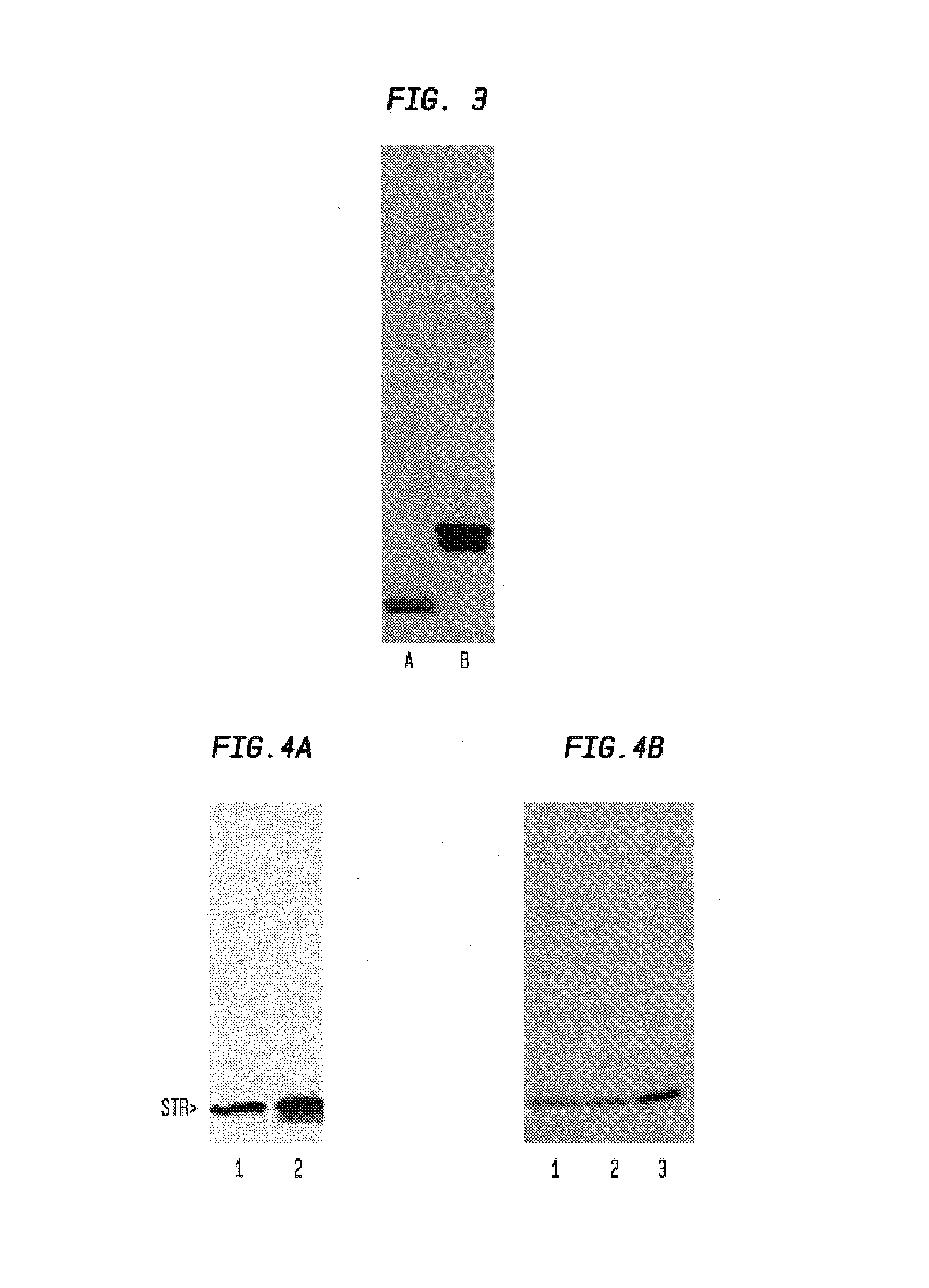Using viruses to detect or purify proteins
a technology of proteins and viruses, applied in the field of using viruses to detect or purify proteins, can solve the problems of high cost, high cost, and high time required for the creation of new plant viral vector products, and achieve the effects of rapid and inexpensive production, easy programmability and self-replication
- Summary
- Abstract
- Description
- Claims
- Application Information
AI Technical Summary
Benefits of technology
Problems solved by technology
Method used
Image
Examples
example 1
Preparation of Infectious TMV with a Modified Coat Protein
[0061]We used cDNA copy of TMV inserted into pBR322 plasmid known as TMV304, originated from laboratory of Dr. J. Culver. 937bp KpnI-NcoI fragment with 3′-end of TMV (including full coat protein (CP) sequence) was cut out from TMV304 and inserted into plCxxxx vector (a modified SK vector with additional restriction sites, including NcoI). This produced the plasmid plCyyyy (TMVcp3). The 21-nucleotide sequence encoding the heptapeptide TLIAHPQ (SEQ ID NO: 7) that has affinity to streptavidin (Delvin et al., 1990; Lam et al., 1991) was inserted into the gene for the TMV CP by POR-site-specific mutagenesis. We incubated plCyyyy with two combinations of primers:
[0062]
(SEQ ID NO:2)1) Forward 24-mer Bluescript primer:(5′-CGCCAGGGTTTTCCCAGTCACGAC-3′) and(SEQ ID NO:3)cpfR 47-mer primer:(5′-TTGGGGATGCGCGATCAATGTGGAAGTCCAAACCAAACCAGAAGAGC-3′).(SEQ ID NO:4)With:Reverse 24-mer Bluescript primer:(5′-AGCGGATAACAATTTCACACAGGA-3′) and(SEQ ID ...
example 2
Purification of Streptavidin with Modified CP from TMV
[0066]TMV particles with fused CP-tag were tested for affinity to commercial streptavidin. Several grams of N. benthamiana leaves were homogenized with liquid nitrogen. After that, equal volume (1 g / 1 ml) of extraction buffer was added (50 mM tris-HCl, pH8.0; 0.5M NaCl; 0.25% Nonidet P-40; 1.3% polyvinylpolypyrrolidone (PVPP); 1 mM phenylmethylsulfonylfluoride (PMSF); 3 mkg / ml pepstatin; 1 mkg / ml leupeptin; 5 mM ascorbic acid) as well as streptavidin equivalent to 100 μg per 1 g of leaf tissue. All manipulations were conducted at 0 to 4° C. Homogenate was centrifuged 2 min. at 14000 rpm and the resulting supernatant was centrifuged 2 times for 10 min. at 14000 rpm. The supernatant was adjusted to 25% (NH4)2SO4 and centrifuged 10 min. at 14000 rpm. The 25% (NH4)2SO4 supernatant was adjusted to saturated (NH4)2SO4 and centrifuged 10 min. at 14000 rpm. Precipitate was suspended in 10 mM phosphate buffer, pH7.2, clarified by centrifu...
example 3
Identification of a Heptapeptide Recognizing Wild-Type TMV Coat Protein
[0068]Using phage display system, we determined a heptapeptide sequence recognizing intact wild-type TMV particles. This sequence was used for construction of cassette: ATG-heptapeptide sequence-enterokinase cleavage site. Cassette sequence was fused with the gene of hepatitis B S protein. Fused construct was inserted into crTMV viral delivery vector and expressed in plants.
PUM
| Property | Measurement | Unit |
|---|---|---|
| molecular weights | aaaaa | aaaaa |
| pH | aaaaa | aaaaa |
| affinity | aaaaa | aaaaa |
Abstract
Description
Claims
Application Information
 Login to View More
Login to View More - R&D
- Intellectual Property
- Life Sciences
- Materials
- Tech Scout
- Unparalleled Data Quality
- Higher Quality Content
- 60% Fewer Hallucinations
Browse by: Latest US Patents, China's latest patents, Technical Efficacy Thesaurus, Application Domain, Technology Topic, Popular Technical Reports.
© 2025 PatSnap. All rights reserved.Legal|Privacy policy|Modern Slavery Act Transparency Statement|Sitemap|About US| Contact US: help@patsnap.com



